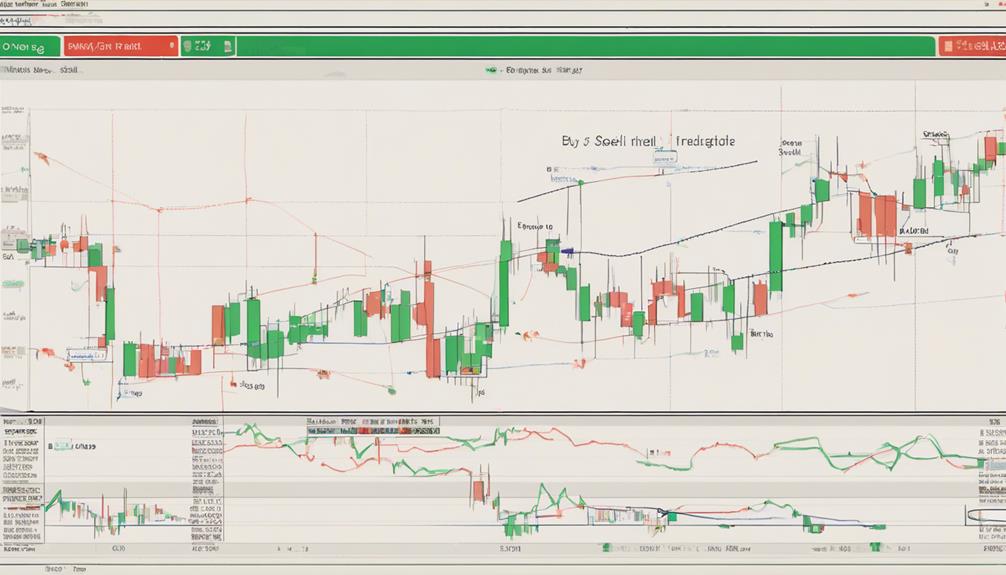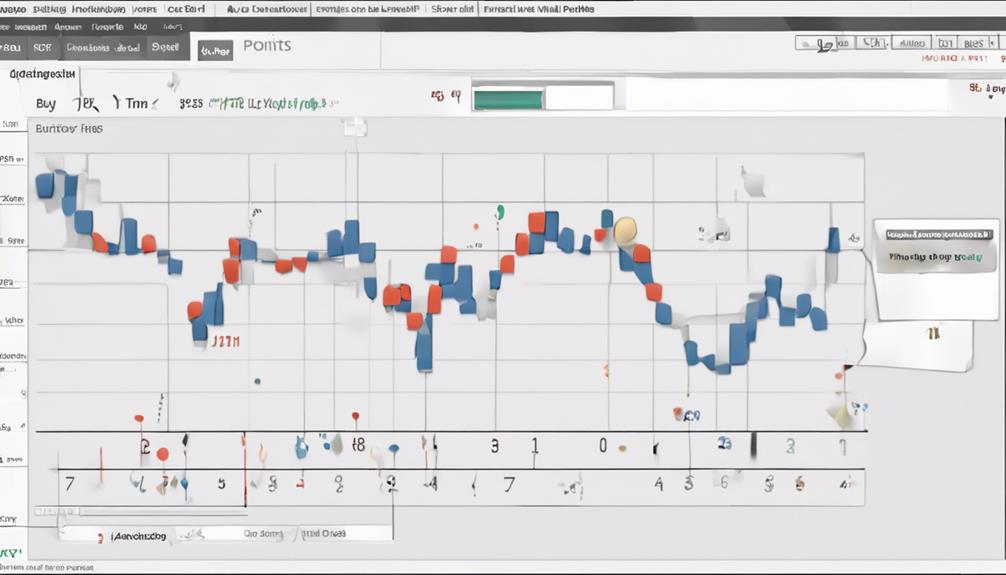Exploring the realm of technical analysis, the ROC Indicator stands out as a valuable tool for traders seeking to gauge momentum and potential trend reversals.
By mastering three straightforward steps, traders can harness the power of this indicator to enhance their decision-making processes.
From calculating the Rate of Change to strategically interpreting ROC values, a world of possibilities unfolds for those willing to explore the depths of this indicator.
As we venture further into the intricacies of utilizing the ROC Indicator, a deeper understanding of its nuances and practical applications will undoubtedly emerge, paving the way for more informed and strategic trading maneuvers.
Understanding ROC Indicator Basics
In the realm of technical analysis, a foundational understanding of the ROC Indicator serves as a cornerstone for evaluating price movements with precision and insight.
The ROC Indicator, also known as the Rate of Change Indicator, quantifies the percentage change in price over a specified period, typically 12 days. By comparing the current closing price to that of a set number of periods ago, traders can gauge the momentum in the market.
ROC values above zero indicate bullish momentum, signaling an uptrend, while values below zero suggest bearish momentum, indicating a downtrend. Plotted against a zero line, the ROC helps identify accelerating uptrends or downtrends, aiding in the identification of potential overbought and oversold zones in the market.
This understanding of the ROC Indicator is crucial for investors navigating the complexities of financial markets and seeking to make informed decisions based on price changes and trends.
Implementing ROC Indicator in Trading

Utilizing the ROC Indicator as a pivotal tool in trading strategies allows investors to effectively gauge momentum shifts and make informed decisions based on price dynamics. The Rate of Change (ROC) Indicator calculates the percentage change in price over specific periods, providing insights into the momentum of a financial instrument. By comparing the current closing price with the price n periods ago, typically 12 days, traders can interpret whether an asset is overbought or oversold. A rising ROC above the zero line indicates an accelerating uptrend, while a falling ROC above zero signifies a slowing uptrend.
Integrating the ROC into trading strategies can assist in identifying optimal entry and exit points based on momentum analysis. Additionally, combining moving averages with the ROC can offer confirmation signals, enhancing the effectiveness of trading decisions. Understanding how to interpret and utilize the ROC Indicator is crucial for traders seeking to improve their financial education and make well-informed buy or sell choices in the market.
Maximizing ROC Indicator Effectiveness

To enhance trading strategies effectively, maximizing the effectiveness of the Rate of Change (ROC) Indicator is essential for investors seeking to make well-informed decisions based on momentum analysis. The ROC Indicator, a popular momentum indicator in financial markets, helps traders identify accelerating uptrends and downtrends.
By using a standard period of 12 days, investors can accurately gauge the momentum of a financial instrument. When the ROC is above the zero line and rising, it indicates accelerating uptrends, while falling values above the zero line suggest slowing uptrends. Conversely, falling ROC values below the zero line signal accelerating downtrends.
To maximize the ROC Indicator's effectiveness, it is advisable to combine it with moving averages to pinpoint optimal entry and exit points. This integration helps traders avoid false signals and navigate extreme levels more effectively, leading to better-informed trading decisions based on technical analysis tools.
What Are the Basic Steps for Utilizing the ROC Indicator in Technical Analysis?
When it comes to using the ROC indicator in technical analysis, it is important to follow the best practices for ROC indicator to achieve accurate results. The basic steps include selecting a specific time frame, understanding the significance of the ROC line, and using it in conjunction with other indicators for confirmation.
Frequently Asked Questions
What Is ROC Strategy?
The ROC strategy is a method employed by traders to gauge the momentum of price movements in a security. It involves analyzing the Rate of Change indicator to identify the speed of price fluctuations, aiding in trend confirmation and reversal predictions.
How Do You Use Price Rate of Change?
Utilizing the Price Rate of Change (ROC) involves analyzing percentage price changes over a specified period to gauge market momentum. Positive ROC values signal bullish sentiment, while negative values suggest bearishness. Traders can leverage ROC for identifying potential entry or exit points.
What Is the Difference Between ROC and Rsi?
ROC and RSI differ in focus and function: ROC gauges price momentum through percentage changes, while RSI assesses price strength for overbought/oversold signals. ROC emphasizes price changes, while RSI indicates potential reversals. Traders utilize both for varied market conditions.
How Do You Use a Momentum Oscillator Indicator?
Utilizing a momentum oscillator indicator involves comparing the current price of a security to its past price over a specific period. This comparison helps traders gauge the speed of price change, identify momentum shifts, and determine potential entry or exit points in trading.
Conclusion
In conclusion, mastering the ROC Indicator involves precise calculation, interpretation of values, and strategic application in trading. By following these steps diligently, traders can enhance their decision-making process, identify market trends, and seize profitable opportunities.
Remember, in the world of trading, knowledge is power, and the ROC Indicator serves as a valuable tool for informed decision-making. Stay ahead of the curve and leverage the power of the ROC Indicator to optimize your trading strategies.
